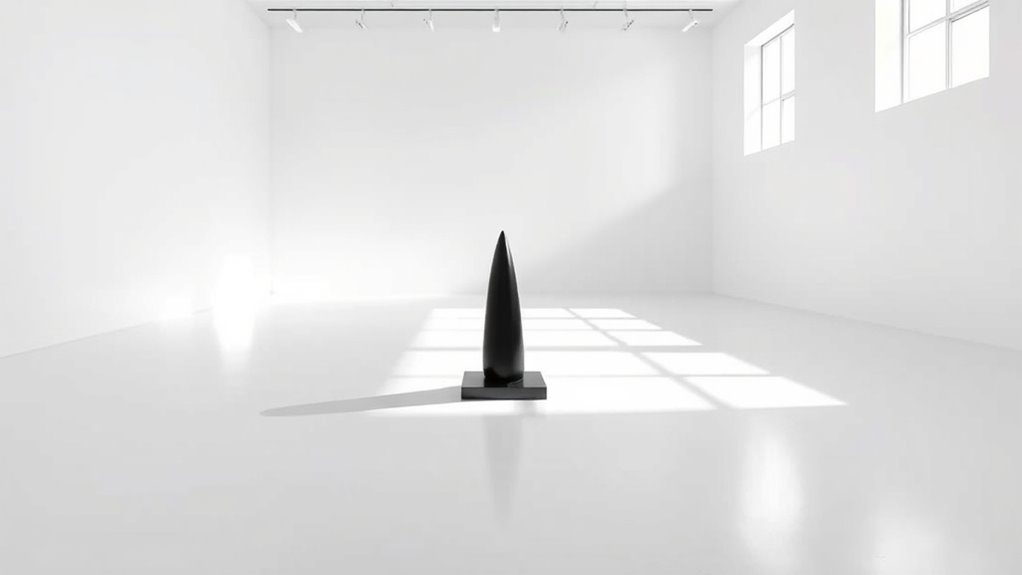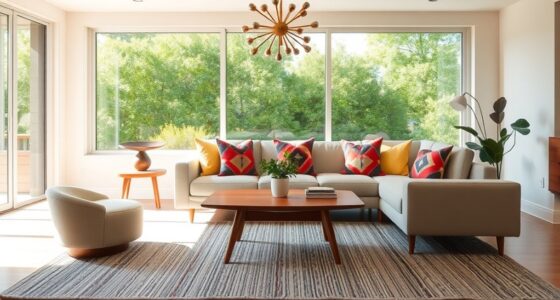Minimalism isn’t just about owning less; it’s a complex lifestyle shaped by personal values, culture, and circumstances. It’s a journey that varies for everyone and isn’t a one-time achievement. External perceptions and social pressures can make it seem simple or extreme. The key is understanding that living with less requires mindset, intentional choices, and ongoing effort. If you want to explore why minimalism is more nuanced than it appears, keep exploring—there’s much more to discover.
Key Takeaways
- Minimalism varies greatly based on individual values, circumstances, and cultural influences, making it more complex than a one-size-fits-all approach.
- It is an ongoing personal journey that evolves over time, requiring persistent effort and self-awareness.
- True minimalism emphasizes intentional choices and meaningful possessions, not just deprivation or elimination.
- External perceptions and social pressures can complicate minimalist lifestyles, leading to misunderstandings or resistance.
- Achieving minimalist fulfillment depends on personal priorities, making the process uniquely challenging for each individual.
The Misunderstanding of Minimalism as a One-Size-Fits-All Approach
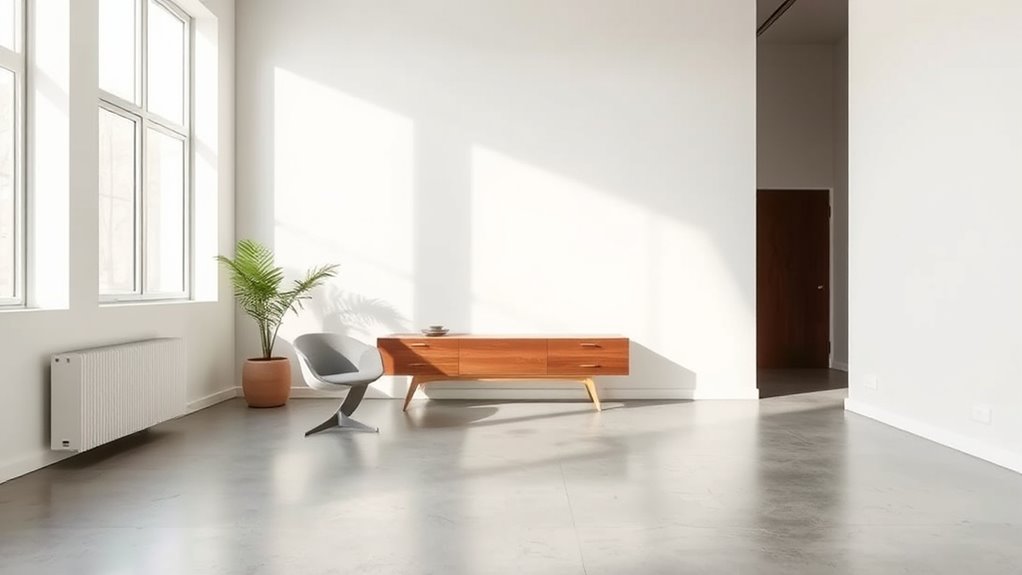
Many people assume minimalism means everyone should live the same way, but in reality, it’s highly personal. The misunderstanding is that minimalism is a one-size-fits-all lifestyle, when it’s actually about intentional choices that reflect your values. What feels minimal to one person might be different for another, depending on culture, finances, and life stage. There are no strict rules dictating what you must give up or keep. This flexibility allows each individual to define their own version of minimalism. Additionally, understanding zoning laws is crucial when considering tiny house living, as legal restrictions can significantly impact your options. Unfortunately, many see it as a rigid or extreme way of living, which isn’t accurate. Your personal minimalist journey is unique, shaped by your circumstances and goals, making minimalism a highly adaptable and personalized approach.
The Difference Between Simplicity and Deprivation
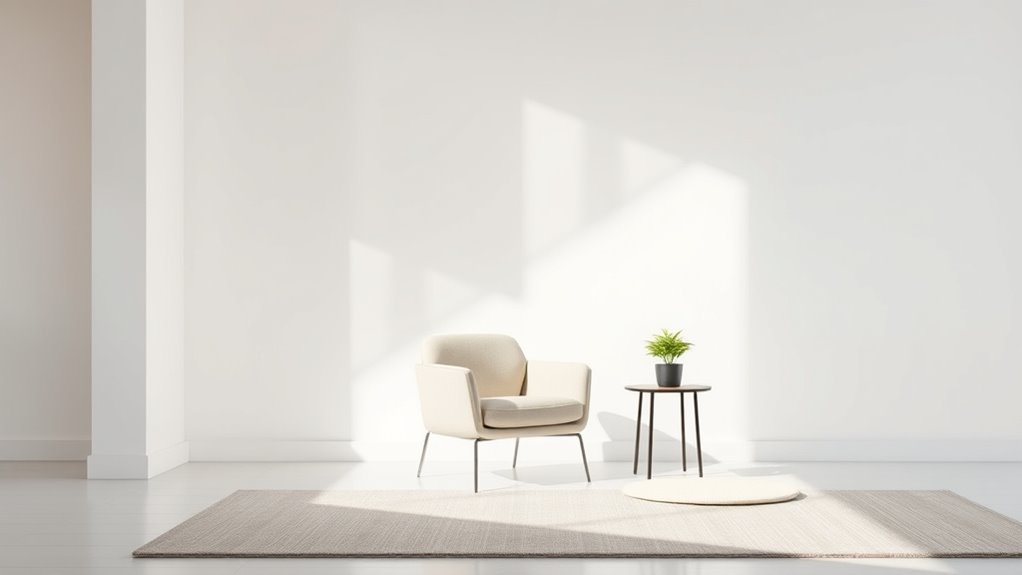
Have you ever wondered what truly distinguishes simplicity from deprivation? The key difference lies in intention and fulfillment. Simplicity involves owning only what adds value or meaning, enhancing your life without excess. Deprivation, on the other hand, is about strict denial driven by rigid rules, often leading to unnecessary hardship.
Consider these points:
Embracing simplicity involves intentional choices that enhance life, unlike deprivation’s unnecessary restrictions and frustrations.
- Simplicity emphasizes functional or beautiful items that serve a purpose.
- Deprivation focuses on scarcity and unnecessary restrictions.
- True simplicity aims to improve quality of life, while deprivation can diminish well-being.
When practicing simplicity, you intentionally choose items that enrich your experience. Deprivation, however, limits what you need or enjoy, often resulting in frustration rather than fulfillment.
Personal Values and Lifestyle Choices Shape Minimalist Paths
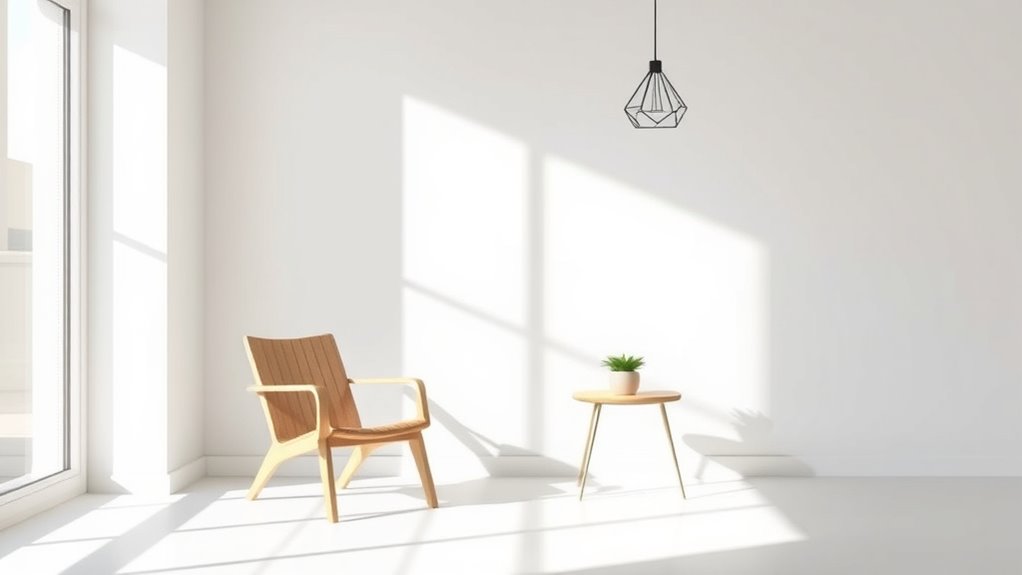
Your personal values guide what you see as essential, shaping your unique minimalist journey. Your lifestyle—family, work, hobbies—directly influences how you declutter and organize your space. Because everyone’s priorities differ, minimalism looks different from person to person. Embracing curiosity about your motivations can help you discover your true priorities and make more intentional choices. Recognizing the core traits that influence your behavior can further refine your approach to minimalism, ensuring it aligns authentically with who you are. Additionally, understanding the specific needs of highlighted hair can guide you in selecting personalized hair care routines that support your overall lifestyle and values. Exploring dream interpretation can also reveal subconscious motivations behind your lifestyle choices, helping you understand what truly matters to you. Incorporating wall organization systems into your space can enhance both functionality and aesthetic appeal, making your minimalist approach more effective and visually pleasing.
Unique Motivations Drive Minimalism
What motivates someone to embrace minimalism often varies based on personal values and lifestyle choices. Your motivations shape your minimalist journey uniquely, reflecting what you prioritize most. For example, some seek spiritual growth, aiming for clarity and peace. Others prioritize environmental sustainability, reducing waste and consumption. Financial freedom can also be a driving force, helping you manage expenses and build security. Your lifestyle—such as demanding careers or family responsibilities—further influences how you adopt minimalism. These motivations lead to diverse paths, from decluttering your home to streamlining digital habits. Recognizing your personal values enables you to create sustainable habits that truly resonate with you, making minimalism an authentic reflection of your core priorities. Additionally, understanding the importance of mindful decluttering can help you approach your possessions with intention and care. Developing a robotics mindset in your approach to possessions and habits can foster innovative ways to live simply. Embracing emotional support during this process can also strengthen your commitment and emotional well-being. Incorporating nutrition awareness, such as mindful juice choices, can further support your holistic minimalist lifestyle.
Personal Space Reflects Preferences
Personal space choices in minimalism are deeply influenced by individual values, lifestyle, and living conditions. Your preferences shape how you define and create your personal space, reflecting your priorities. For some, minimalism means a clutter-free environment focused on function, while others seek aesthetic simplicity or emotional comfort. Your lifestyle factors—such as family size, occupation, or cultural background—also play a role in shaping your minimalist path. These elements influence whether your personal space emphasizes practicality, beauty, or tranquility. For example, understanding security zone info can help you create a safe and comfortable environment tailored to your needs. Additionally, awareness of ice cream consumption trends and flavors can influence choices in social settings or personal indulgence, subtly affecting how you curate your environment. Recognizing the importance of vibrational energy can further assist you in aligning your space with your desired emotional state. Exploring decorative planters can also inspire creative ways to add personality and vitality to your minimal environment. Being mindful of emotional manipulation tactics often used in narcissistic relationships can help you maintain a healthy and balanced environment. Here’s a quick look at how different values and preferences impact your minimalist approach:
| Value | Preference | Impact on Personal Space |
|---|---|---|
| Functionality | Decluttering for mental clarity | Simplifies space, enhances focus |
| Aesthetic Simplicity | Valuing beauty and order | Creates calm, visually pleasing space |
| Emotional Comfort | Prioritizing emotional well-being | Personalizes space for relaxation |
Lifestyle Influences Decluttering Choices
Have you ever considered how your lifestyle choices directly shape what you decide to keep or discard in your minimalist journey? Your lifestyle influences decluttering decisions by aligning possessions with personal values and daily routines. For example, if sustainability is a priority, you might choose to declutter items that don’t serve eco-friendly purposes. Similarly, hobbies and work demands determine which belongings are essential and which can be let go. Your living environment also plays a role: urban apartments may require different decluttering strategies than rural homes. Key factors include: – Personal values, like prioritizing sustainability or family – Lifestyle choices, such as work demands and hobbies – Living environment, whether city or countryside. Additionally, understanding spiritual decor elements and dream symbolism variations can help you recognize emotional attachments to certain possessions, making it easier to part with items that no longer serve your well-being. These elements shape your minimalist path, making decluttering a personal, intentional process. Creating the perfect farmhouse bedroom ambience can also influence the types of possessions you choose to retain or discard, aligning your space with your overall lifestyle and aesthetic preferences.
The Cultural and Social Privileges of Embracing Less
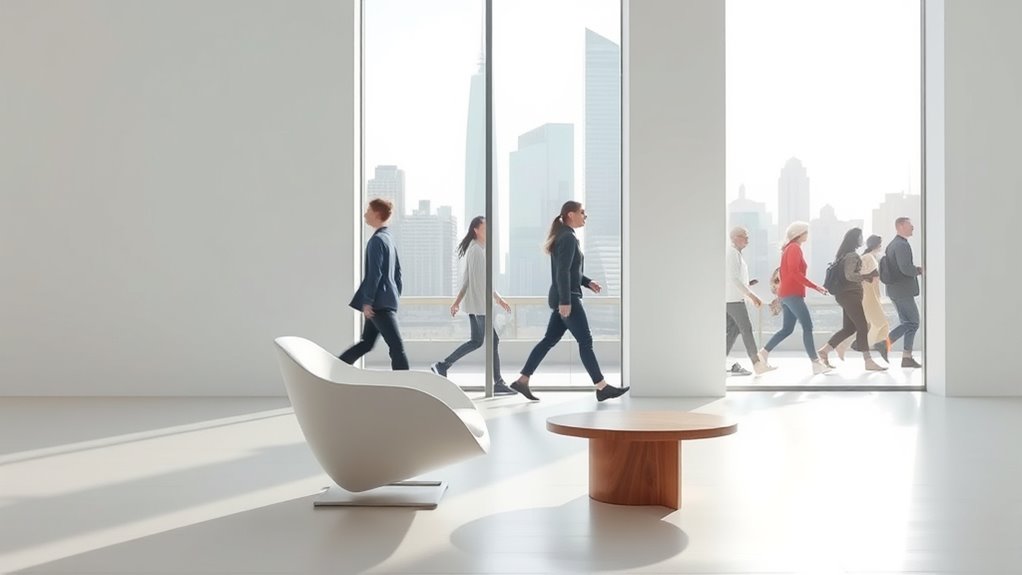
While embracing minimalism can seem like a simple choice, it often reflects broader cultural and social privileges. Many people have the privilege and accessibility to choose a minimalist lifestyle because they possess the financial freedom to own less and focus on experiences instead of possessions. In contrast, those living in impoverished or resource-limited environments may find minimalism impractical or inaccessible, as possessions can be essential for safety and survival. This lifestyle can also create social divides, with some viewing minimalism as elitist or disconnected from diverse economic realities. Affluent individuals showcasing minimalist homes or wardrobes might do so as social signaling, which can undermine the authenticity of the lifestyle. Ultimately, embracing less often hinges on stability and security that not everyone has access to. Additionally, the availability of merchant services can influence how easily consumers and businesses adopt streamlined and resource-efficient practices, further highlighting disparities in economic opportunities. Moreover, the ability to adopt sustainable consumption practices depends heavily on existing infrastructure and access to eco-friendly products, which are not equally available everywhere. The disparities in access to electric bikes and related technology exemplify how economic and infrastructural factors shape lifestyle choices.
The Challenges of Overcoming External Perceptions and Judgments
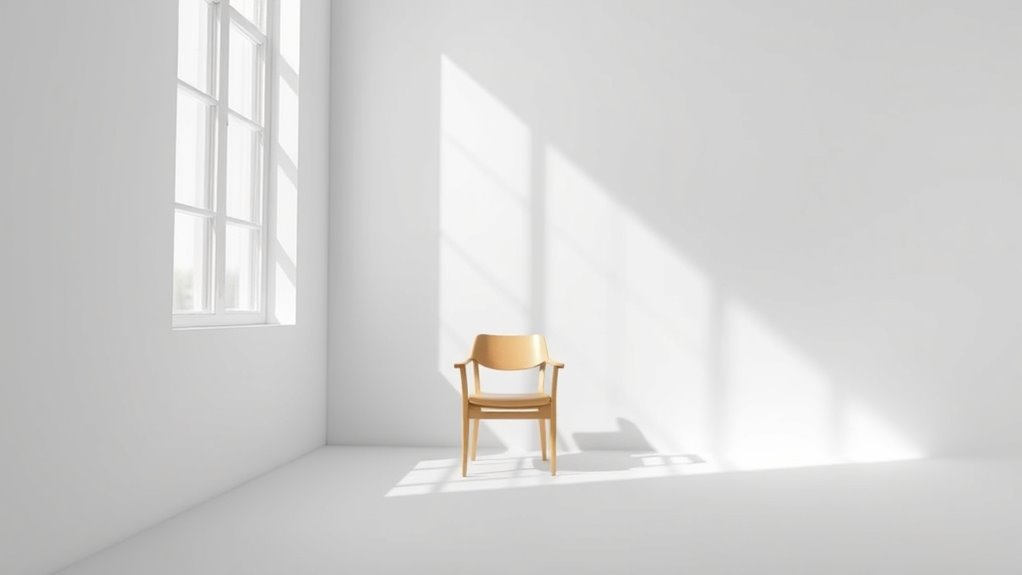
Embracing minimalism often invites misunderstandings and judgments from those around you. People’s perceptions can cast you as “weird” or different, creating social stigma or discomfort. You might find it challenging to educate friends and family about your choices, as their reactions range from curiosity to dismissal. Resistance from others often stems from their attachment to possessions or consumerist norms, making acceptance difficult. Concerns about judgment or feeling criticized may cause you to withdraw or hide your lifestyle. To combat this, clear communication helps shift perceptions over time. Sharing your personal benefits and intentions can foster understanding and reduce negative judgments. Patience and courage are essential, as overcoming external perceptions requires consistent effort and resilience.
Avoiding Extremes: What Minimalism Is and Isn’t
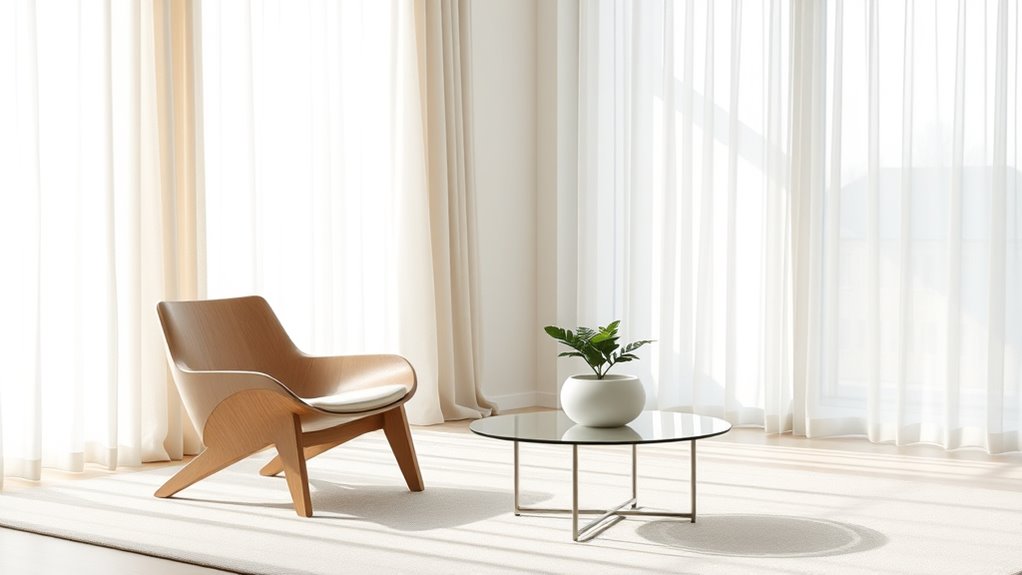
Minimalism isn’t about strict rules or extreme deprivation; it’s about choosing what truly adds value to your life. You should aim for balance, avoiding both excess and radical austerity that can lead to stress. Ultimately, intentional living means making mindful choices without falling into extremes.
Balance Over Extremes
Achieving balance is essential in minimalism, as it prevents you from swinging between excess and deprivation. When you find a middle ground, you create a sustainable lifestyle that aligns with your needs. Embracing moderation helps you avoid burnout or feelings of restriction, making your minimalist journey more adaptable. Extremes—like extreme decluttering or austerity—often lead to stress or dissatisfaction rather than fulfillment. To maintain this balance:
- Prioritize intentional choices that support your well-being
- Avoid over-accumulation or excessive simplification
- Recognize your evolving needs and adjust accordingly
Intentional Living Matters
Since minimalism is about making conscious choices, it’s important to understand that it’s not about adhering to strict rules or stripping away everything you value. Instead, intentional living is at its core, focusing on purpose. When you select possessions or habits, do so thoughtfully, aligning them with what truly matters to you. Minimalism isn’t about extreme deprivation or living nomadically unless that genuinely reflects your purpose. It’s a flexible mindset that emphasizes quality over quantity and encourages self-awareness. By avoiding extremes, you can create a lifestyle that supports your goals without sacrificing comfort or fulfillment. Remember, the goal isn’t perfection but a balanced life driven by purpose—making choices that resonate with your values and enrich your everyday experience.
The Role of Mindset and Intentionality in Living With Less
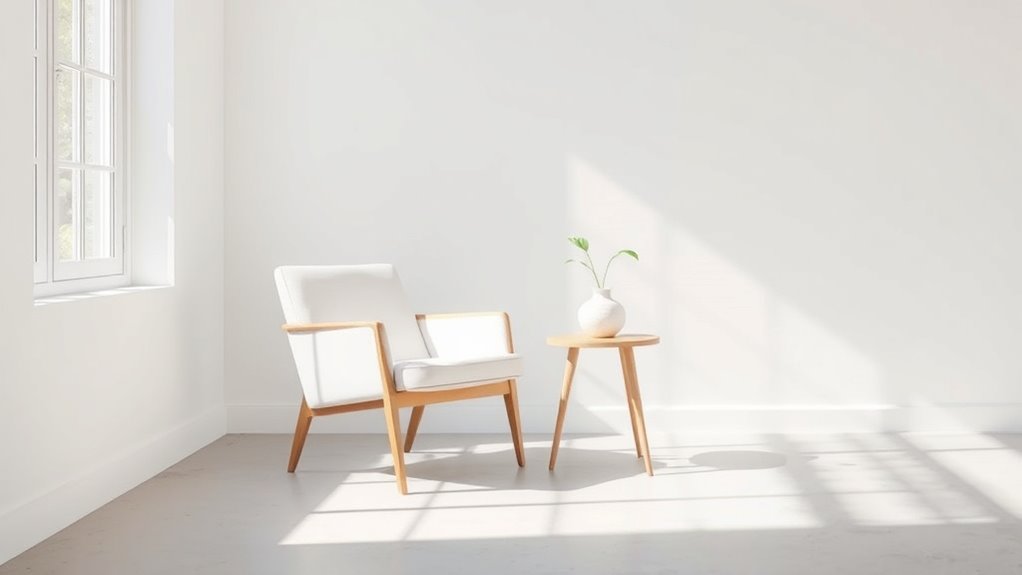
Living with less begins with a mindset shift that emphasizes intentionality over material accumulation. Your mindset shapes how you approach possessions, experiences, and daily choices. Cultivating intentionality allows you to prioritize what truly matters, rather than falling into impulsive buying or consumerist urges. With a purposeful outlook, you can:
Living intentionally transforms possessions into meaningful choices that align with your core values.
- Recognize your core values to guide decluttering
- Resist societal pressures to accumulate more
- Focus on meaningful experiences over possessions
This mindset transforms minimalism from a fleeting trend into a sustainable lifestyle. When you consciously decide what to keep and pursue, you create a space for fulfillment rooted in purpose. Your intentionality becomes the foundation for living with less, making your minimalist journey authentic and enduring.
Balancing Practical Needs With the Desire for Simplicity
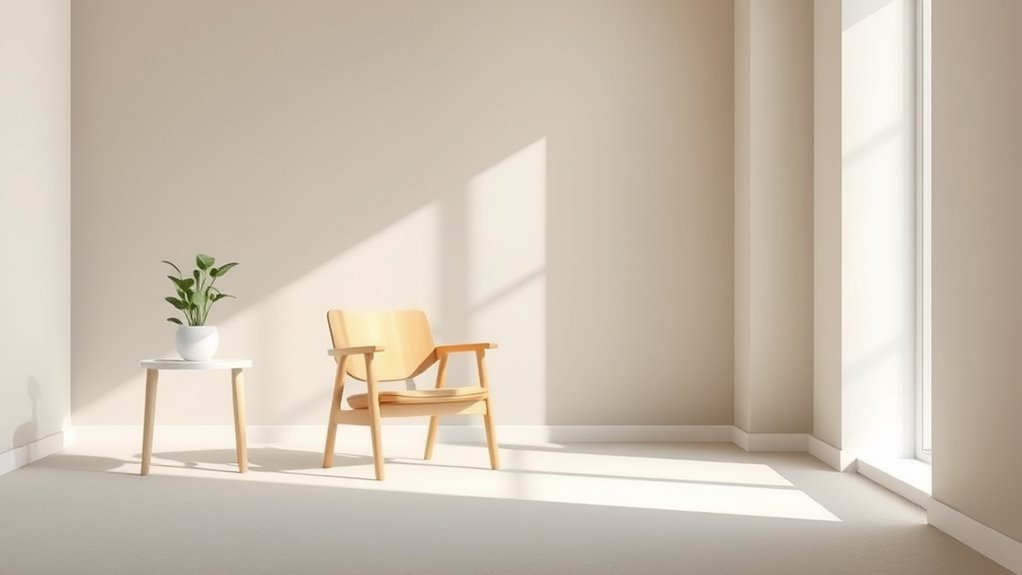
Finding the right balance between practical needs and a desire for simplicity involves making intentional choices about which possessions truly serve your daily life. Recognizing that some items are essential—whether for work, hobbies, or family—helps you tailor your minimalist approach to your unique circumstances. Achieving this balance requires thoughtful decisions about what items provide meaningful purpose versus what can be let go. Practical considerations like space limitations or financial goals also influence how much you can reduce without sacrificing functionality. Remember, owning more than minimal standards can still fit within a minimalist mindset if you use and value those possessions intentionally. Ultimately, maintaining this balance is an ongoing process that involves reflection and flexibility as your needs and priorities evolve.
Recognizing That Minimalism Is a Personal and Ongoing Journey
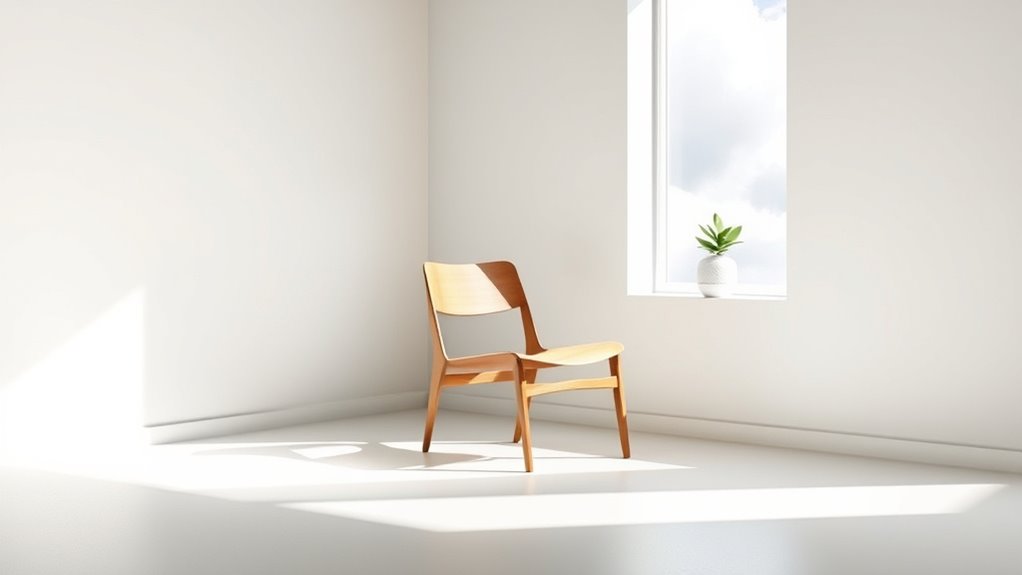
Understanding that minimalism is a personal and ongoing journey helps you appreciate that there’s no single right way to live simply. Your version of minimalism depends on your values, needs, and circumstances, which evolve over time. It’s not a one-time goal but a continuous process of reflection and adjustment. As your priorities shift, so will your understanding of what’s “enough” or “less.” Recognizing this personal aspect makes it easier to stay flexible and patient with yourself. Keep in mind:
Minimalism is a personal journey that evolves with your values and circumstances over time.
- Your minimalist journey is unique, shaped by your experiences.
- There’s no universal endpoint—progress varies for everyone.
- Persistent effort and self-awareness are key to maintaining your personal minimalist lifestyle.
Ultimately, embracing this ongoing journey allows you to develop a meaningful, sustainable approach to living simply.
Frequently Asked Questions
Why Is Minimalism so Difficult?
You find minimalism difficult because it challenges your habits and mindset. Letting go of possessions feels emotional, and social pressures make you hesitant. You need time to reflect on what truly matters, which means ongoing effort. Overcoming ingrained consumption patterns and managing discomfort takes patience. It’s a process, not a quick fix, but when you stay committed, you’ll discover a more intentional, fulfilling way to live.
What Is the Dark Side of Minimalism?
The dark side of minimalism can feel like walking a tightrope over a chasm. You might face social isolation, as others don’t understand or judge your choices. Decluttering too much could lead to feelings of deprivation, guilt, or shame if you slip back into old habits. Overemphasizing simplicity might also hide deeper issues, like emotional baggage, leaving you feeling more empty than free.
What Are the Criticisms of Minimalism?
You might see minimalism as just reducing clutter, but critics point out it’s not that simple. They say it can be a privilege, often inaccessible to those with fewer resources. Some view it as superficial or trendy, creating unrealistic standards. Others worry it causes emotional distress by forcing you to part with sentimental items. Plus, it can overlook social and economic complexities, sometimes fostering judgment or guilt toward different lifestyles.
What Is the Difference Between Minimalism and Simple?
Ever wonder what sets minimalism apart from simplicity? You might think they’re the same, but they’re not. Minimalism focuses on reducing possessions to meet specific goals, like owning fewer than 100 items. Simplicity, however, is broader—it’s about aligning your life with what truly matters, prioritizing meaningful experiences over material clutter. While minimalism’s goal is clear-cut, living simply involves conscious choices that create clarity and purpose in your everyday life.
Conclusion
Remember, minimalism isn’t a one-size-fits-all tunic from the marketplace; it’s a personal voyage, much like steering through the bustling agora of ancient times. It’s about choosing what truly matters to you, not following a rigid set of rules. So, stay intentional and adapt your journey as you go. With patience and a clear mind, you’ll find that living with less can be as freeing as the wind in your sails—an ongoing adventure, not a final destination.
